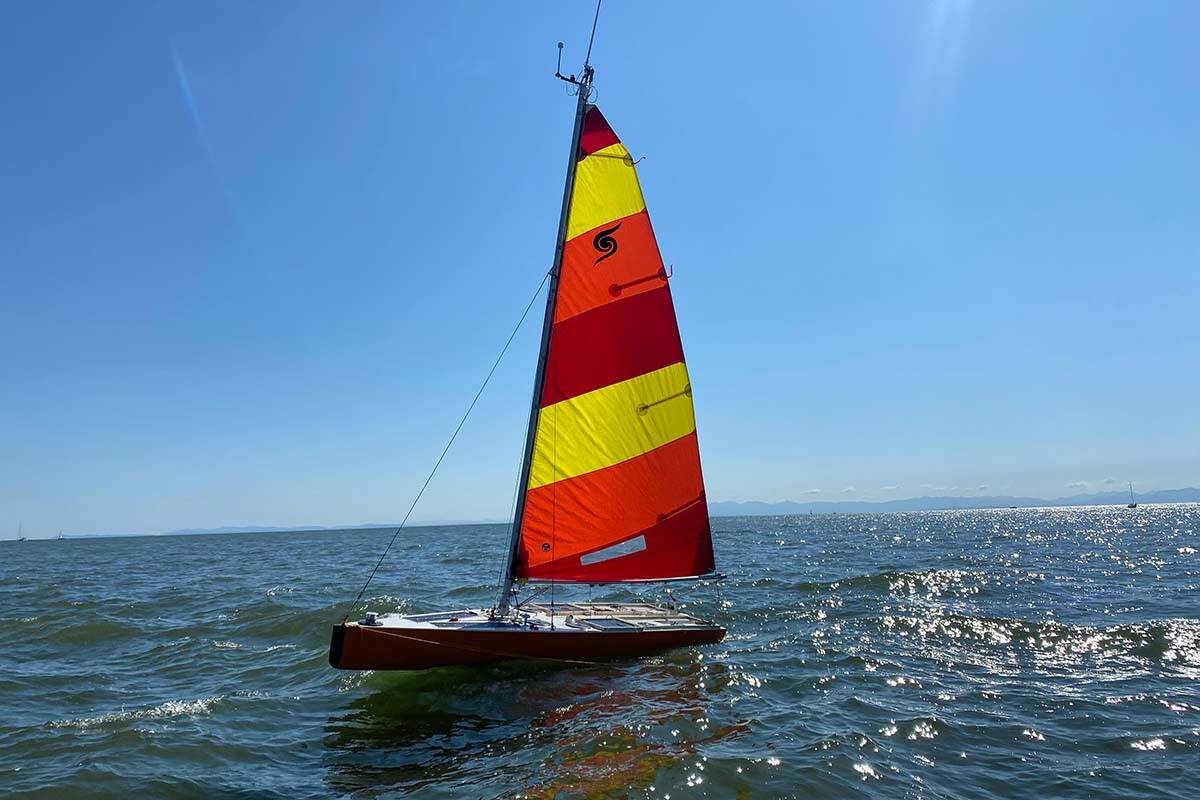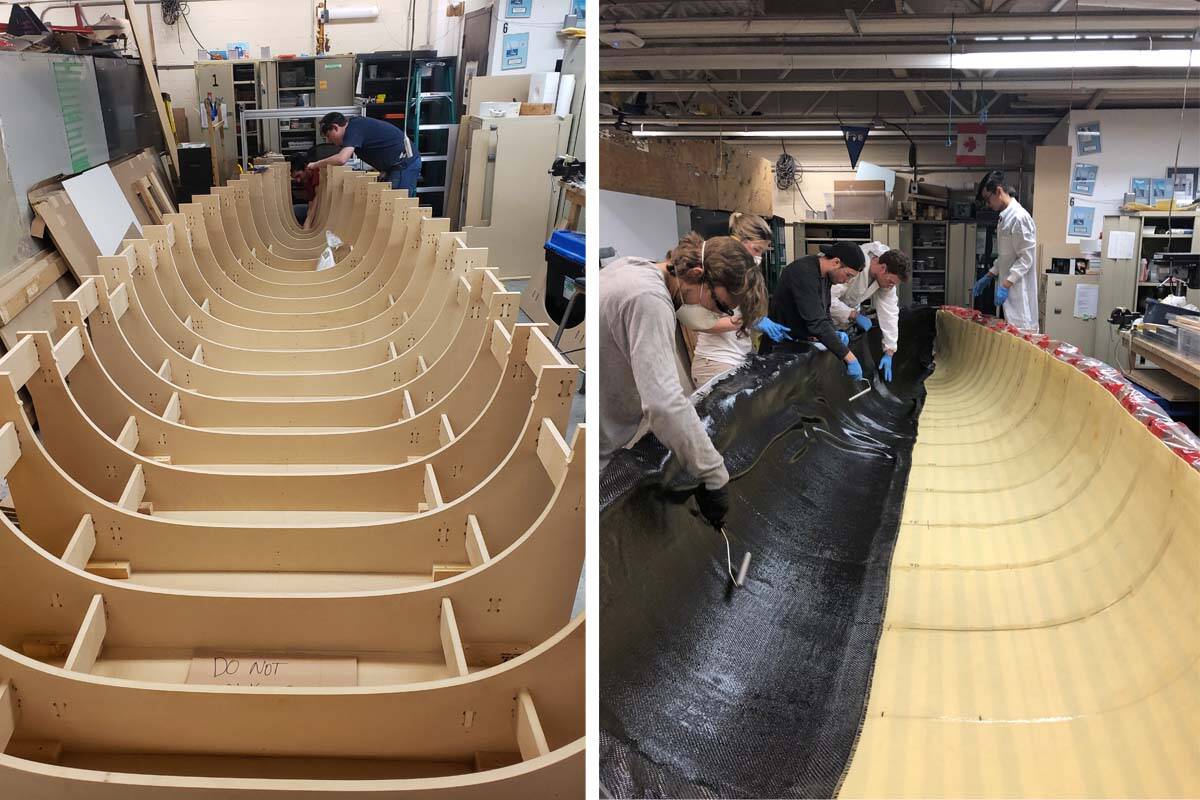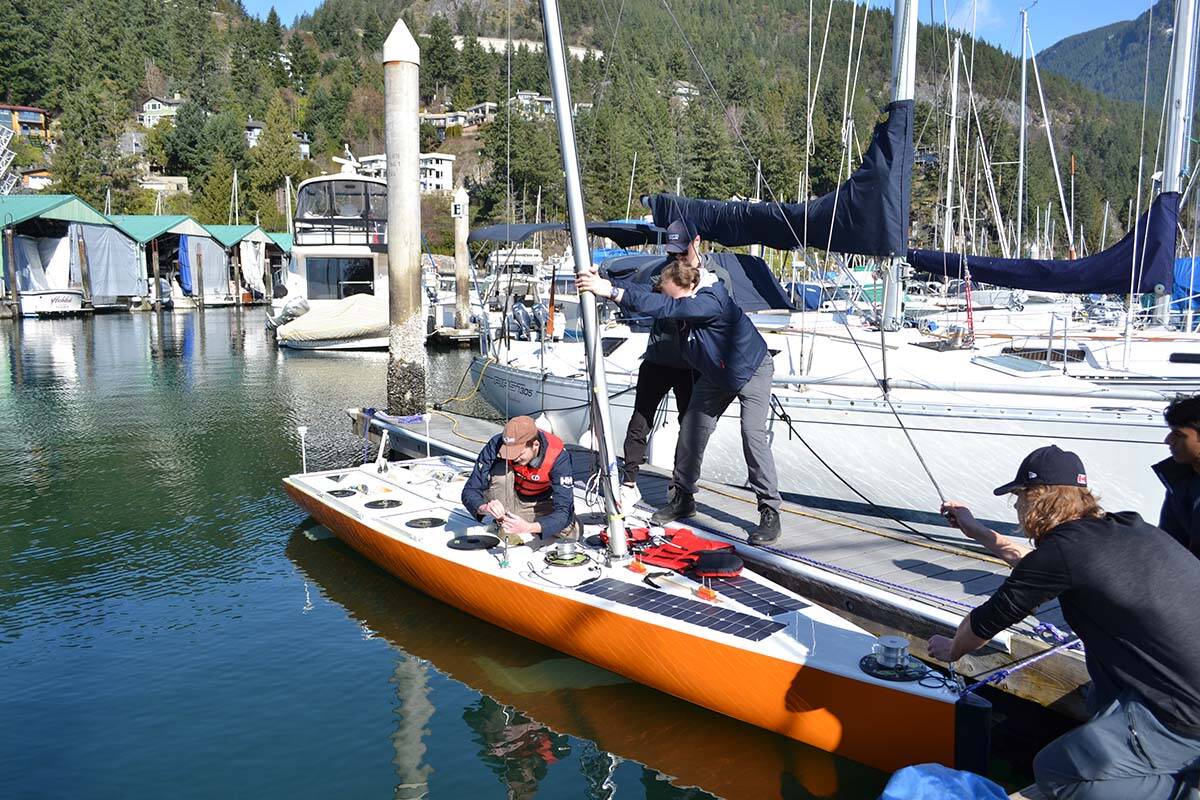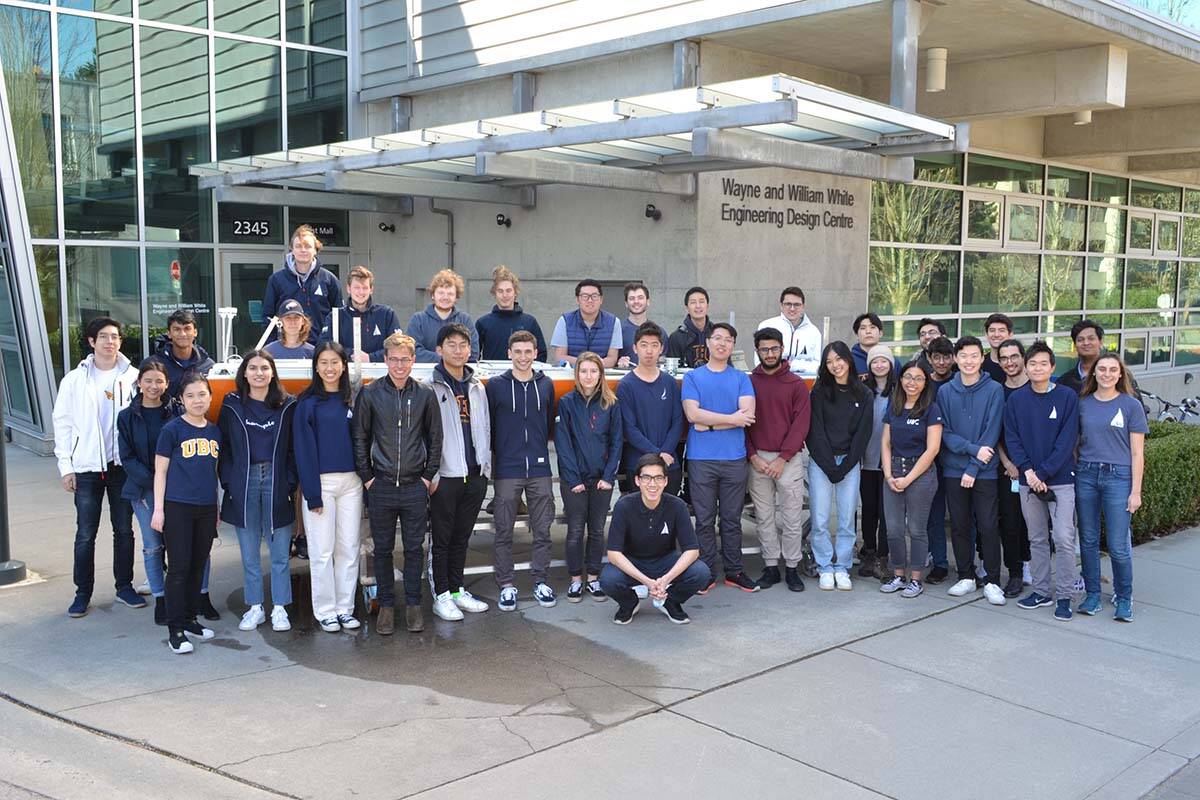For a competitive yacht racer, the 2,300-nautical mile journey between Victoria, B.C. and Maui, Hawaii can be completed in about 10 days. Undergraduate students at the University of British Columbia are hoping their self-sailing boat makes it in three weeks.
Raye is a fully-autonomous 18-foot sailboat, constructed from carbon fiber and powered by solar panels. Named after late naval architect Raye Montague, the sailboat is the product of six years of unpaid, not-for-credit work by dozens of UBC students.
Boat building is a long-standing tradition at the university, whose students started constructing semi-autonomous vessels in the early 2000s, launching inter-university competitions to test their creations. In 2014, students decided they were ready to take things one step further and produced their first ever fully-autonomous ocean-going boat, Ada, to take on a cross-Atlantic voyage.
“Funnily enough, we got tired of winning. So we were looking to push ourselves even further and go for something more challenging,” Raye co-captain and third-year engineering physics student Asvin Sankaran says, sitting inside UBC’s Engineering Design Centre on an August morning.
Ada only made it about 700 kilometres into its journey from Newfoundland to Ireland in 2016 before it was hit by a hurricane, tearing its sail, breaking its rudder and water-logging its electrical components. The beaten-up boat drifted along for years before washing up in Florida.
Raye, Sankaran says, has been “drastically improved,” however, and stands a good chance of withstanding the Pacific. Its hull is broken into small watertight subsections, so if one area floods the rest remain protected. All of Raye’s electrical components have also been waterproofed, and the team has built a stronger sail and added a second rudder.
The way Raye is able to sail without any human assistance or feedback is through a set of predetermined grid points it is programmed to seek out.
“And then the boat is going to go ‘Okay the wind conditions are like this, my heading is like this, my GPS is this, I have to go here’,” Sankaran says. Raye is also capable of avoiding other seafaring vessels by using marine traffic technology and interpreting it into data points – an important skill when there are 13,000-foot cargo ships lurking about.
Still, Sankaran admits there are factors they simply cannot prepare for ahead of time. If a hurricane hits Raye, like with Ada, the small boat is unlikely to survive. And, even without a major storm, Raye could end up irreparably off course.
“If she goes to Japan, she goes to Japan. If she goes to Hawaii, she goes to Hawaii,” Sankaran says. Either way, he says, the project will have been an incredible learning experience.
Of course, success is still the goal.
“If she does get to Hawaii, we’re partying for weeks on weeks,” Sankaran jokes.
They had hoped to launch Raye into international waters off Victoria last Saturday (Aug. 27), but faced challenging wind conditions. With just a one-week window left before weather systems shift in the Pacific, the team is now scrambling to see if they can release Raye from around Ucluelet or Tofino – where they believe conditions will be more favourable – over the September long weekend. If not, they’ll have to wait until next year to test Raye’s capabilities.
Regardless, they’re already thinking up next steps. The goal going forward is to have their boats collect climate data while out on the water. It will likely be a project taken up by the next round of engineering undergraduates, as students continue to pass down their knowledge from year to year.
@janeskrypnek
jane.skrypnek@blackpress.ca
Like us on Facebook and follow us on Twitter.
British ColumbiaresearchScienceUBC




